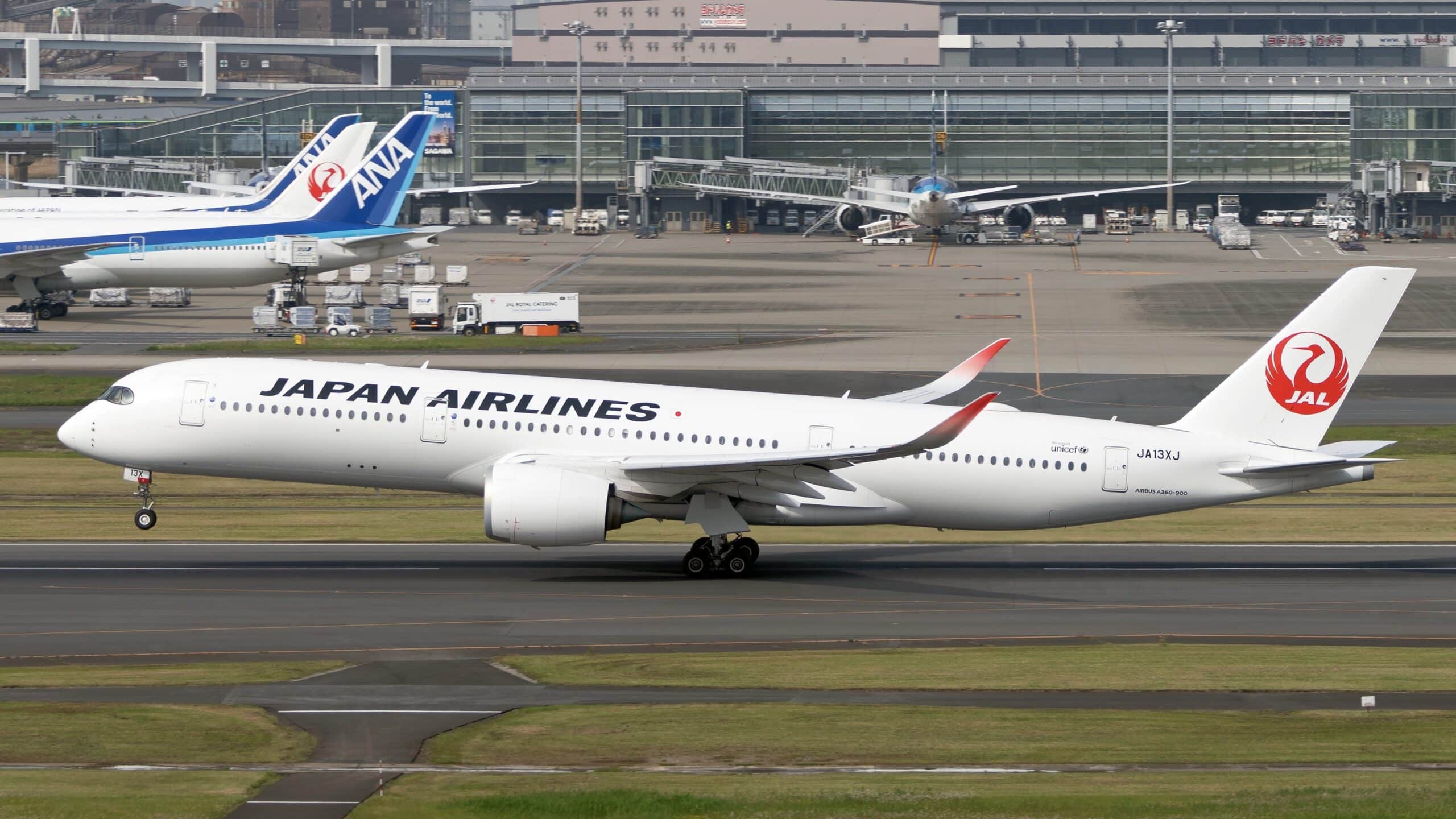
If you have booked a long-haul international flight in recent years, chances are you have flown on either the Airbus A350 or the Boeing 787 Dreamliner.
These two aircraft are the flagships of modern aviation. Airlines rely on them for efficiency, while travelers appreciate their comfort. But when it comes to the passenger experience, many people wonder: Airbus A350 vs Boeing 787, which plane is better?
The answer is not simple, because each aircraft offers unique advantages. Both are designed to reduce jet lag, save fuel, and make long-haul travel more enjoyable.
However, there are important differences in cabin comfort, seating layout, noise levels, and even the routes they typically fly. For travelers, those details can make the difference between arriving refreshed or feeling drained after a 12-hour flight.
This guide will walk you through a clear, side-by-side comparison of the Airbus A350 and Boeing 787. We will look at what matters most to travelers: Economy Class and Business Class seating, cabin comfort, airline choices, range, and overall passenger experience.
By the end, you will know exactly what to look for the next time you book a flight, and you will be able to decide which aircraft best fits your travel style.
Quick Overview: Airbus A350 vs Boeing 787
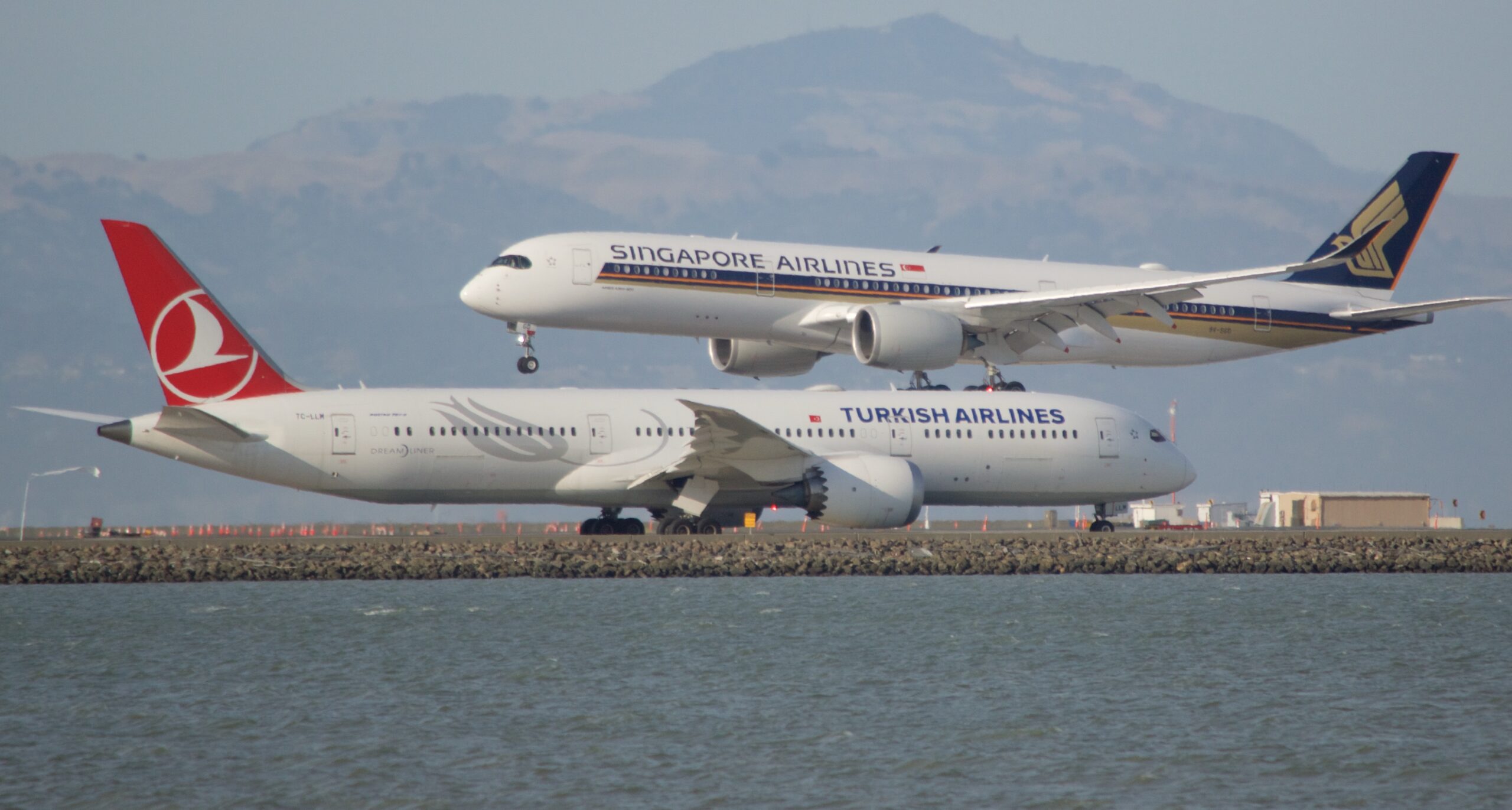
The Airbus A350 and the Boeing 787 Dreamliner are the two most advanced long-haul aircraft flying today. Both were designed with one goal in mind: to make long-distance travel more efficient and more comfortable for passengers.
They have replaced older wide-body jets like the Boeing 767 and Airbus A340 on many routes, helping airlines reduce fuel costs and helping travelers enjoy a smoother ride.
The Boeing 787 Dreamliner entered service in 2011 and quickly became popular with airlines around the world. It is known for its lightweight design made from composite materials, fuel efficiency, and passenger-friendly features such as extra-large windows and improved cabin pressure.
Airlines often use the 787 on long-haul routes where demand is strong but not large enough to fill a jumbo jet.
The Airbus A350 followed a few years later, making its commercial debut in 2015. Like the 787, it uses advanced composite materials and modern design to improve efficiency.
However, the A350 was designed to be slightly larger and longer-range, giving it an edge on ultra-long-haul flights. Airlines such as Singapore Airlines, Qatar Airways, and Cathay Pacific use the A350 for their flagship routes, including some of the longest nonstop flights in the world.
Here is a quick side-by-side comparison of the two aircraft:
| Feature | Airbus A350 | Boeing 787 Dreamliner |
| First Flight | 2013 | 2009 |
| Entered Service | 2015 | 2011 |
| Passenger Capacity (typical) | 300 – 350 | 240 – 330 |
| Range | Up to 9,700 nautical miles | Up to 8,500 nautical miles |
| Cabin Width | ~5.6 meters (18 feet 5 in) | ~5.5 meters (18 feet 1 in) |
| Airlines Operating | Singapore Airlines, Qatar Airways, Cathay Pacific, Delta Air Lines, Lufthansa | United Airlines, ANA, Qatar Airways, British Airways, Air Canada |
Both aircraft share a focus on passenger well-being with higher humidity levels, better pressurization, and modern cabin designs. Yet, as we will see in the sections ahead, small design differences create very different experiences for travelers in economy and business class.
Cabin Comfort And Passenger Experience
Both the Airbus A350 and the Boeing 787 Dreamliner were designed with the passenger in mind. Older long-haul aircraft often left travelers exhausted after 10 or more hours in the air, but these new-generation jets focus on reducing jet lag and improving comfort.
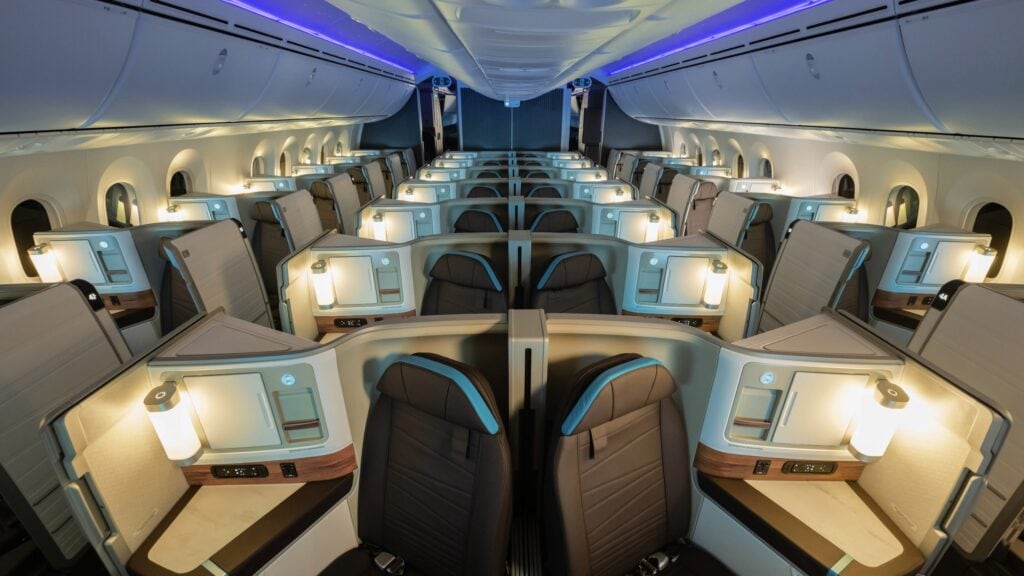
Shared Comfort Features
Both planes use carbon-fiber composite materials, which allow for stronger but lighter frames. This design enables airlines to maintain lower cabin altitude and higher humidity levels than older aircraft.
Passengers often report feeling less dehydrated and less fatigued when flying on an A350 or 787 compared to aircraft like the Boeing 767 or Airbus A330 / A340.
Another shared feature is improved pressurization. Instead of feeling the effects of being at 8,000 feet in the air, the cabins are pressurized to feel closer to 6,000 feet. This makes breathing easier and helps reduce headaches, dry skin, and general discomfort during long-haul flights.
Airbus A350: Quieter And Wider
The Airbus A350 has a slight edge in overall comfort thanks to its wider fuselage. The extra few inches may not sound like much, but it allows airlines to configure economy cabins with wider seats, usually around 18 inches compared to the Dreamliner’s 17 inches.
That difference can be significant on a long-haul flight.
The A350 is also known for being one of the quietest aircraft in the sky. Reduced engine noise and improved sound insulation make for a calmer environment, especially during overnight flights when rest is important.
Boeing 787: Windows and Ambiance
The Boeing 787 Dreamliner shines when it comes to design details that enhance the passenger experience. Its windows are the largest of any commercial aircraft, almost 65 percent bigger than those on older planes.
Even passengers seated in the middle section can enjoy natural light and outside views.
Another unique feature of the Dreamliner is its electrochromic window dimming system. Instead of traditional pull-down shades, passengers can adjust the tint of their windows electronically, reducing glare without blocking the view.
The cabin also features advanced LED mood lighting, which helps adjust the body clocks of passengers during long flights across time zones.
The Bottom Line on Comfort
If cabin space and quietness are your top priorities, the Airbus A350 tends to provide a more comfortable ride. If you value natural light and innovative cabin design, the Boeing 787 Dreamliner delivers a more visually engaging experience.
Both aircraft are a clear step up from older wide-body planes, so travelers benefit no matter which one they board.
Economy Class: Seat Comfort And Layout
For most travelers, the biggest factor in choosing between the Airbus A350 vs Boeing 787 is what the experience feels like in Economy Class. Since airlines operate both planes on long-haul routes, seat width, pitch, and layout can have a major impact on comfort during a 10 to 15-hour journey.
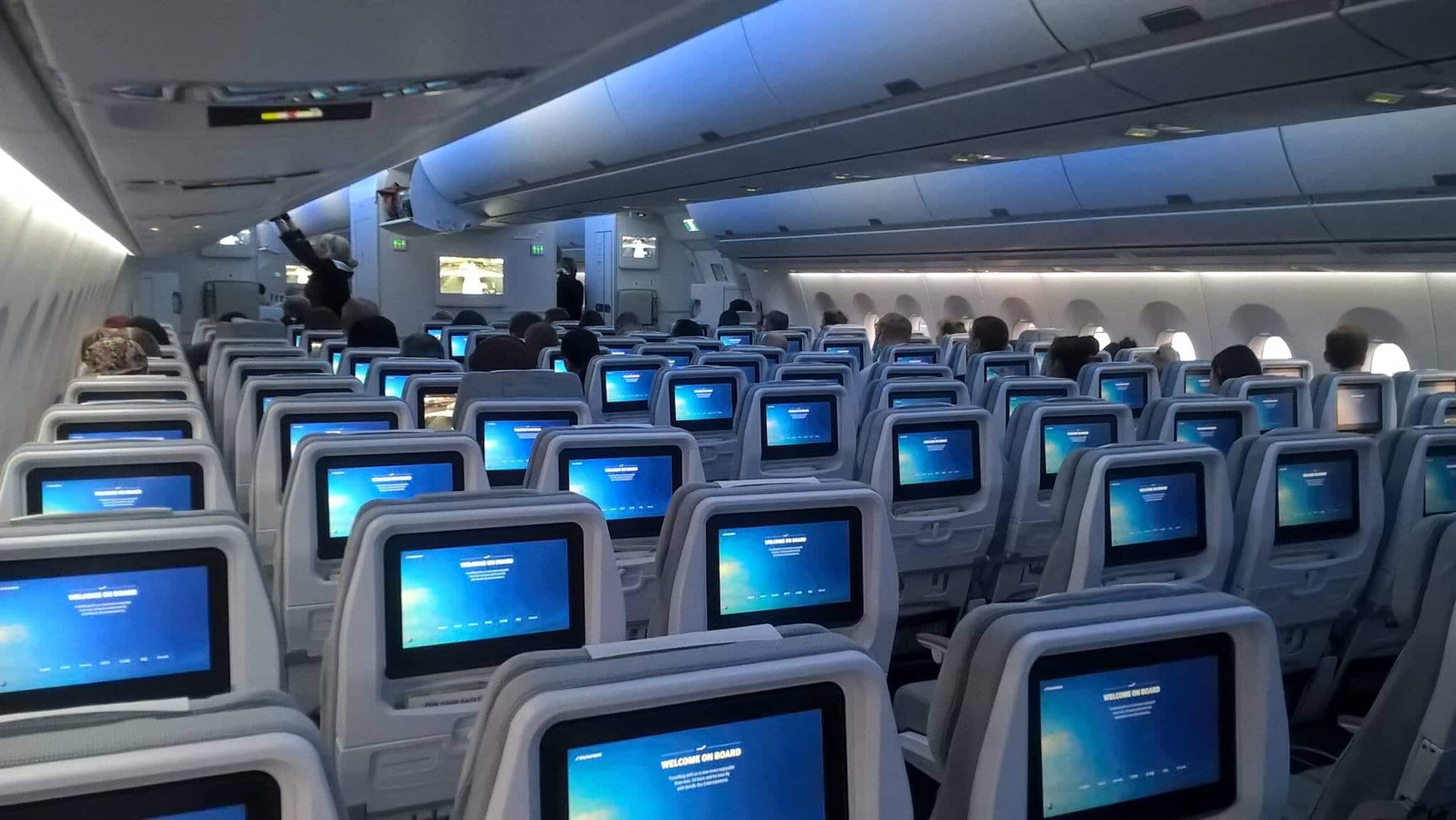
Seat Width And Cabin Layout
The number of seats across a row makes a noticeable difference in how comfortable you feel on a long flight. Thanks to its slightly wider body, the Airbus A350 usually gives passengers more space than the Boeing 787.
The Airbus A350 typically has a 9-abreast layout (3-3-3), which results in seats that are about 18 inches wide. The Boeing 787 is narrower, and while some airlines once used 8-abreast seating (2-4-2), nearly all major carriers now use 9-abreast seating (3-3-3). This reduces the seat width to around 17 inches, which can feel noticeably tighter.
Seat Pitch And Legroom
Legroom is another key factor for comfort in Economy Class. This measurement, known as seat pitch, varies more by airline than by aircraft type, but there are general trends that passengers can expect.
On both the A350 and 787, most airlines provide between 31 and 32 inches of seat pitch. Premium carriers such as Japan Airlines and Singapore Airlines often offer slightly more generous spacing, while low-cost carriers tend to keep things tighter.
Real-World Examples
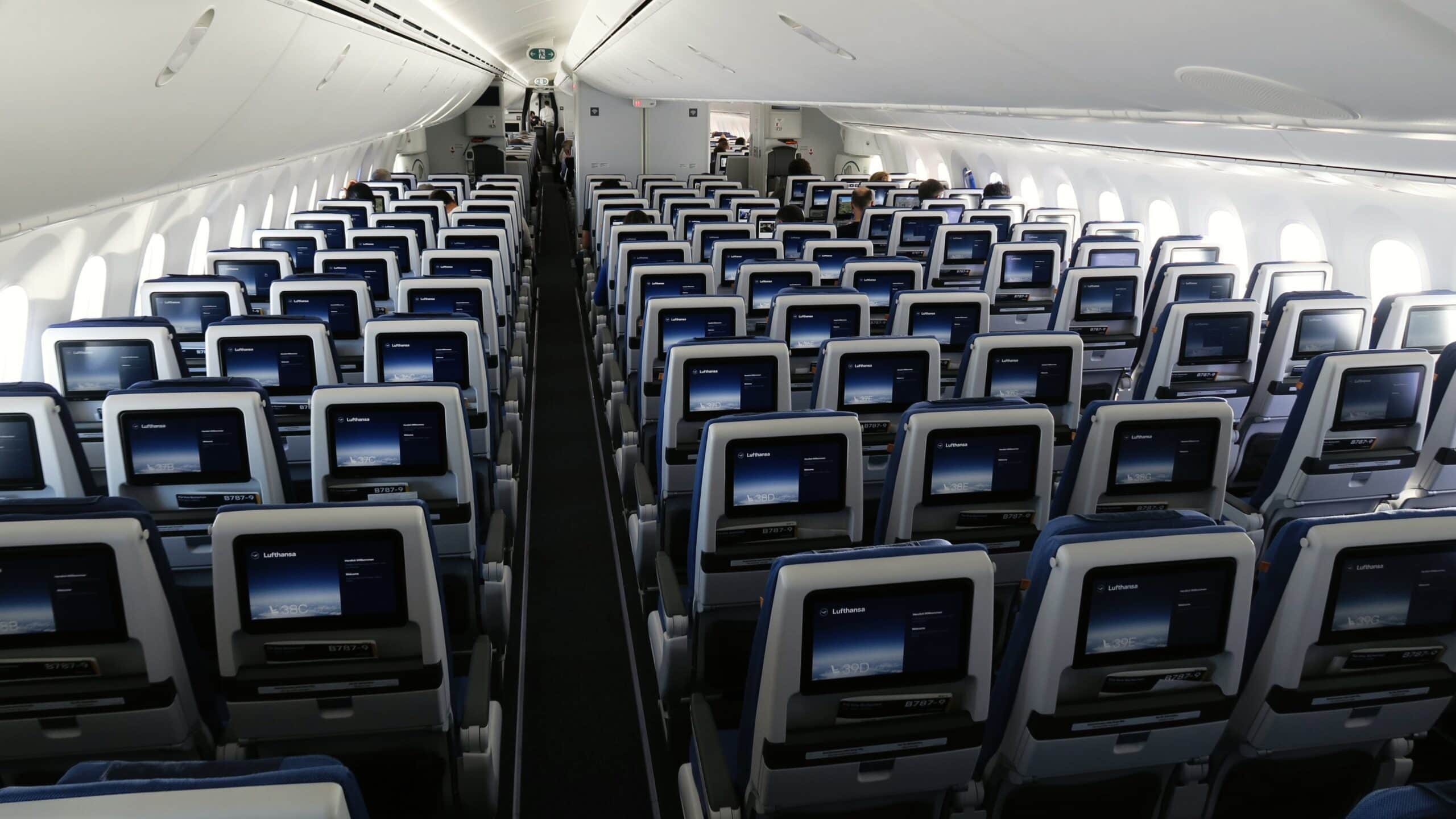
To better understand the differences, it helps to look at how individual airlines configure their Economy Class cabins. These examples highlight the range of comfort travelers can expect on both aircraft.
- Singapore Airlines A350: Economy Class seats measure about 18 inches wide, with a pitch of 32 inches, providing one of the most spacious layouts.
- Qatar Airways A350: Offers 18-inch wide seats with 31 – 32 inches of pitch and excellent cushioning, making it a favorite among frequent flyers.
- United Airlines 787: Economy Class seats are typically 17 inches wide with 31 inches of pitch, which can feel snug on longer flights.
- All Nippon Airways (ANA) 787: A rare exception, ANA maintains 18-inch wide seats in some 787 configurations, offering travelers more space than most airlines on this aircraft.
Choosing The Best Economy Seat
Even small differences in seating can change how comfortable a long flight feels. With a few simple strategies, passengers can maximize their chances of finding a good seat on either aircraft.
- Check Seat Maps Before Booking: Websites like aerolopa or the airline seat map reveal the layout and best seats. Look for rare 2-4-2 layouts on the 787 for extra comfort.
- Aim For Exit Rows and Bulkhead Seats: These often provide more legroom, though they may come with trade-offs like limited recline or proximity to lavatories.
- Consider The A350 For Ultra-Long Flights: On flights lasting over 12 hours, the wider seats and quieter cabin on the Airbus A350 can make the journey more comfortable.
- Check The Airline, Not Just The Aircraft: Seat comfort varies by carrier. A well-configured 787 can still feel better than a poorly designed A350.
Economy Class Verdict
Overall, the Airbus A350 usually provides a more comfortable experience in Economy Class, especially for travelers who value seat width and quietness. The Boeing 787, while tighter in most cases, still offers modern features such as larger windows, advanced lighting, and better air quality than older planes.
Ultimately, both aircraft deliver a clear improvement over the previous generation of long-haul jets.
Business Class: Which Feels More Luxurious
For travelers flying in Business Class, the differences between the Airbus A350 vs Boeing 787 can be even more noticeable than in Economy Class. Cabin width, seating layout, and airline design choices all play a role in shaping the luxury experience.

Cabin Width And Seat Layout
One of the first things to consider in Business Class is the cabin width, since this determines how airlines can configure the seating.
The wider fuselage on the Airbus A350 often allows for more spacious layouts, including 1-2-1 configurations, where every passenger has direct aisle access.
The Boeing 787 Dreamliner, while slightly narrower, can sometimes feel tighter depending on the airline. Some carriers (like LOT POlish) have chosen 2-2-2 layouts in Business Class, which means window-seat passengers may need to step over their neighbor to reach the aisle.
Real-World Examples
Looking at how top airlines configure their cabins gives travelers a better sense of what to expect. Some airlines highlight the strengths of the A350, while others use the 787 to showcase premium experiences.
- Qatar Airways A350: Features the award-winning Qsuite, often considered one of the best Business Class products in the world. It includes sliding doors for privacy, spacious seats, and even the option to create a shared suite with companions.
- Singapore Airlines A350: Offers wide, forward-facing Business Class seats with excellent storage and comfort, designed for long-haul journeys.
- All Nippon Airways (ANA) 787: Known for its “The Room” Business Class seats on certain 787 routes, which are some of the widest and most private seats available today.
- United Airlines 787: Many planes feature the newer Polaris Business Class, with direct aisle access for all passengers and improved bedding and dining.
Passenger Privacy And Comfort
Privacy and comfort matter more in Business Class, especially on overnight flights.
The wider body on the A350 often translates to more spacious seating and better storage options. The innovative design of the 787 Dreamliner can still deliver top-tier Business Class experiences, but passengers should pay close attention to the specific airline and aircraft configuration.
Choosing The Best Business Class Seat
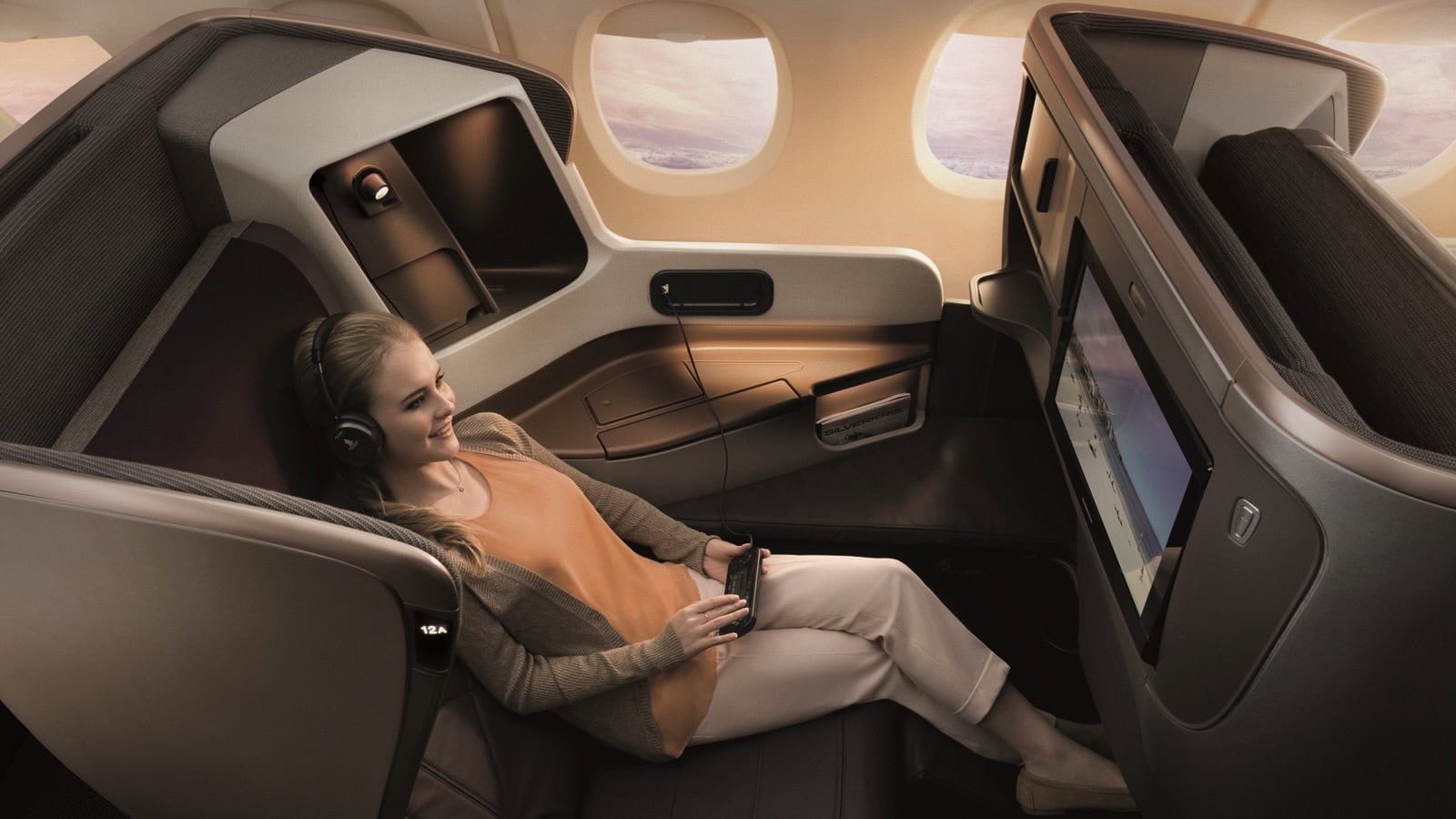
With so much variation across airlines, Business Class travelers can maximize value by doing a little research before booking.
- Look For Flagship Routes: Airlines usually reserve their best Business Class products for long-haul flagship flights [i.e. New York City (JFK) to London (LHR)] . These are more likely to feature the newest seats.
- Check Seat Configurations: A 1-2-1 layout is usually better than a 2-2-2 layout for privacy and comfort. Websites like aerolopa or the airline seat map reveal the layout and best seats.
- Compare Soft Products Too: Service, dining, and bedding often matter as much as the seat itself. For example, Qatar Airways Qsuite feels different not only because of the seat, but also because of its excellent service.
- Leverage Points and Miles: Premium products like Qatar Airways Qsuite or ANA “The Room” are excellent redemption opportunities if booked with miles rather than cash.
Business Class Verdict
The Airbus A350 often feels more spacious thanks to its cabin width, making it the preferred choice for travelers who prioritize privacy and roominess. The Boeing 787, however, is home to some of the best business class seats in the world, such as The Room by ANA and Polaris by United Airlines.
The best experience depends less on the aircraft itself and more on how the airline has chosen to design its premium cabin.
Aircraft Range And Route Networks
Beyond seat comfort, another key difference between the Airbus A350 vs Boeing 787 is how airlines deploy them. Range and capacity play a big role in determining which routes each aircraft is best suited for, and this directly affects where travelers are most likely to encounter them.
Comparing The Range Of Each Aircraft
Range refers to how far an aircraft can fly without needing to refuel. This is especially important for long-haul and ultra-long-haul flights.
- The Airbus A350-900 has a maximum range of about 8,100 nautical miles, while the A350-1000 can reach up to 9,700 nautical miles.
- The Boeing 787-8 flies up to about 7,300 nautical miles, the 787-9 up to 7,530 nautical miles, and the 787-10 around 6,430 nautical miles.
In simple terms, the A350 has a clear edge in ultra-long-haul flying, while the 787 is more commonly used on slightly shorter intercontinental routes.
How Airlines Use the Airbus A350
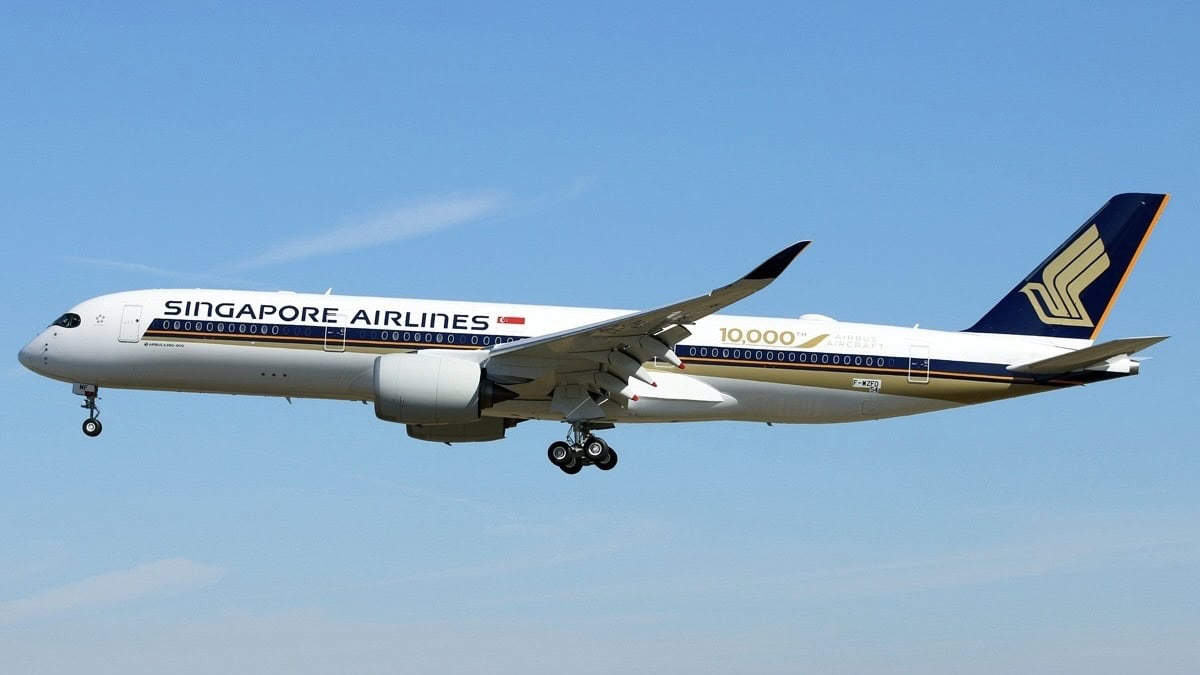
Airlines typically use the Airbus A350 for their flagship long-haul and ultra-long-haul routes. Its efficiency and comfort make it ideal for flights lasting 12 – 18 hours.
- Singapore Airlines: Operates the A350-900ULR on routes such as Singapore (SIN) to New York City (JFK / EWR), the longest nonstop flight in the world.
- Qatar Airways: Uses the A350 on many of its long-haul connections from Doha to the Americas and Asia.
- Lufthansa: Deploys the A350 on transatlantic and Asian routes, such as Munich (MUC) to Los Angeles (LAX) and Munich (MUC) to Hong Kong (HKG).
How Airlines Use The Boeing 787
The Boeing 787 is more versatile and is often chosen for long but not ultra-long routes or for flights to secondary destinations that do not require a massive aircraft. Its smaller size makes it more efficient for routes with moderate demand.
- United Airlines: Operates the 787 on transatlantic flights such as Newark (EWR) to Paris (CDG), as well as long-haul routes to Asia.
- ANA (All Nippon Airways): Uses the 787 on many routes from Tokyo to North America and Southeast Asia.
- British Airways: Flies the 787 to destinations like London (LHR) to Austin (AUS), where a larger aircraft would be harder to fill.
What This Means For Travelers
For passengers, the type of aircraft you fly often depends on the route and airline strategy.
On ultra-long-haul flights, you are more likely to find yourself on an Airbus A350, designed for comfort over extreme distances.
On long but medium-demand routes, the Boeing 787 is more common, allowing airlines to serve smaller markets with fewer passengers.
Range And Route Verdict
The Airbus A350 is the aircraft of choice for the longest flights in the world, offering unmatched range and passenger comfort. The Boeing 787, on the other hand, is better suited to long-haul routes where efficiency and flexibility matter more than raw distance.
Both aircraft have expanded the global route map, making non-stop connections between cities more common than ever before.
Qantas Project Sunrise
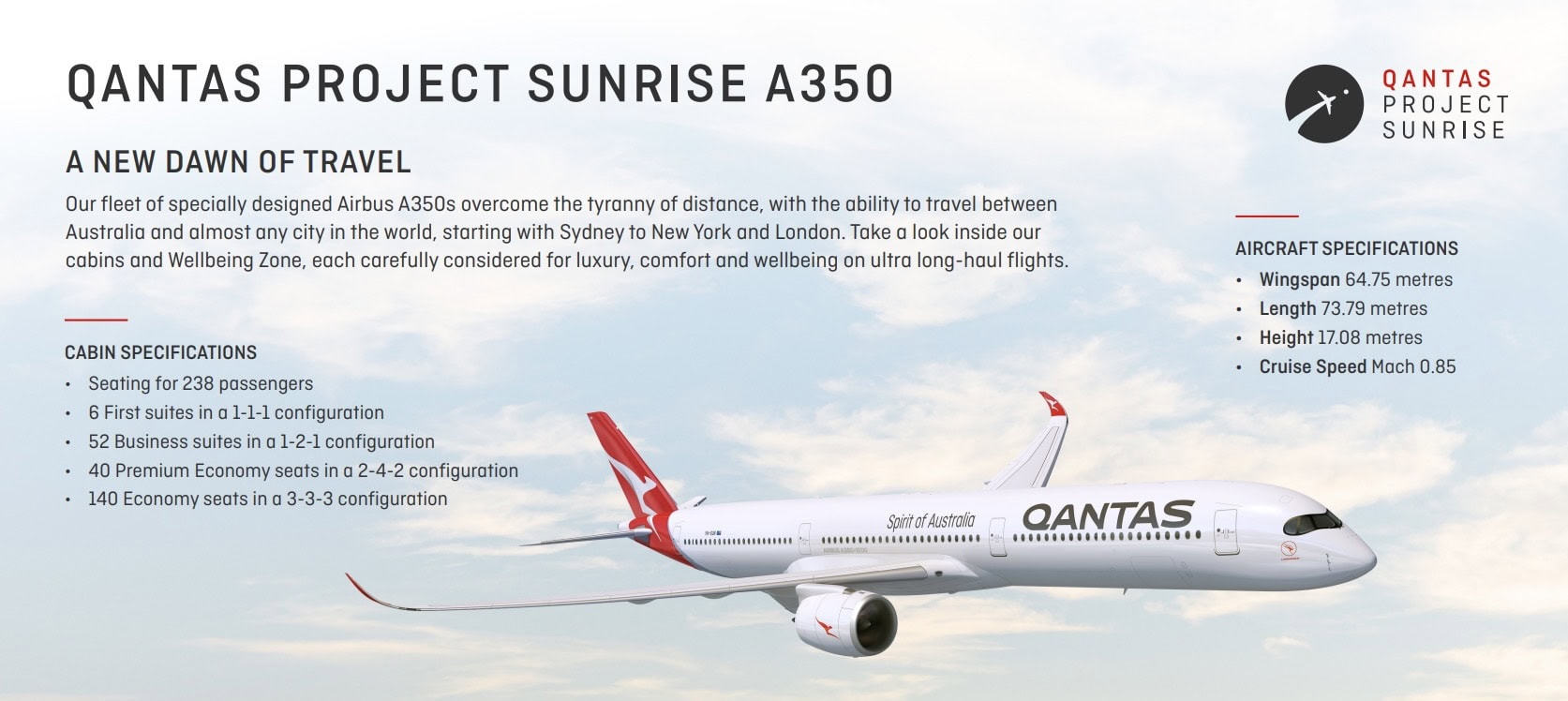
Qantas Project Sunrise is the bold initiative to launch nonstop flights connecting the east coast of Australia (Sydney, Melbourne, etc.) with major global hubs such as New York City (JFK) and London (LHR).
Set to begin in 2026, these flights will be the longest commercial routes in the world, lasting up to 20 hours. Qantas will operate the Airbus A350-1000 for these journeys, with specially designed cabins that include new seating layouts and dedicated wellness spaces to help passengers stay comfortable on such long flights.
By combining convenience with innovative aircraft design, Project Sunrise represents a major step forward in ultra-long-haul travel and positions Qantas as a leader in redefining the future of global connectivity.
Which Aircraft Is Quieter And More Fuel Efficient
When comparing the Airbus A350 vs Boeing 787, noise levels and fuel efficiency are two important areas where both aircraft shine. Airlines save money with lower fuel costs, and passengers enjoy a quieter, smoother ride.
Cabin Noise And Passenger Experience
Noise levels inside the cabin can have a big impact on how rested passengers feel after a long-haul flight. Both the A350 and 787 are significantly quieter than older aircraft such as the Boeing 767 or Airbus A330, but there are small differences worth noting.
The Airbus A350 is often praised as one of the quietest passenger aircraft in the sky. Its engines are designed with advanced noise-reduction technology, and the wider fuselage helps minimize cabin noise during cruise. Travelers on overnight flights frequently report that the A350 feels calmer, especially when trying to sleep.
The Boeing 787 is also much quieter than older models, though some passengers notice slightly more engine hum compared to the A350. That said, the advanced insulation on the 787 still makes it a comfortable option for long journeys.
Fuel Efficiency And Airline Benefits
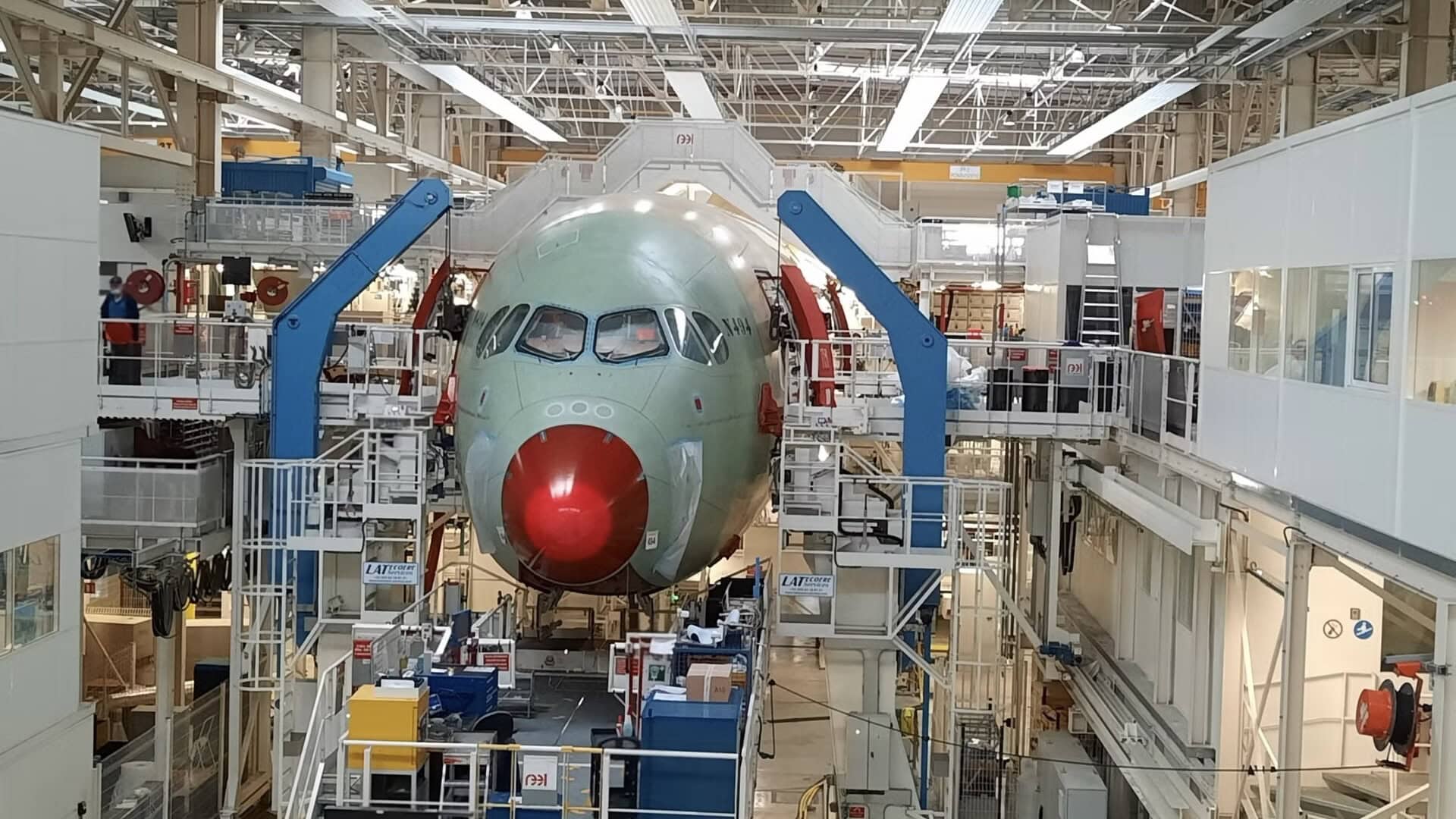
Fuel efficiency is a major reason airlines love both of these aircraft.
By using lightweight composite materials and more efficient engines, both the A350 and 787 reduce fuel burn by about 20 – 25 percent compared to older wide-body jets.
The Boeing 787 Dreamliner was the pioneer in this area, helping airlines open up new long-haul routes that were not financially viable before. The Airbus A350 builds on these improvements with even more efficient engines and aerodynamics, particularly on the larger A350-1000 model.
Environmental Impact
For environmentally conscious travelers, the benefits of flying on either of these aircraft are clear. Lower fuel burn translates directly to reduced carbon emissions.
Airlines also use these planes on nonstop routes that reduce the need for connecting flights, cutting total emissions further.
Traveler Takeaway
From the perspective of a passenger, the key difference is that the A350 tends to be slightly quieter, making it a better option for overnight or ultra-long-haul flights where rest is important.
From an airline perspective, both planes deliver excellent fuel efficiency and environmental benefits, helping to keep ticket prices competitive and routes sustainable.
Which Plane Should You Choose
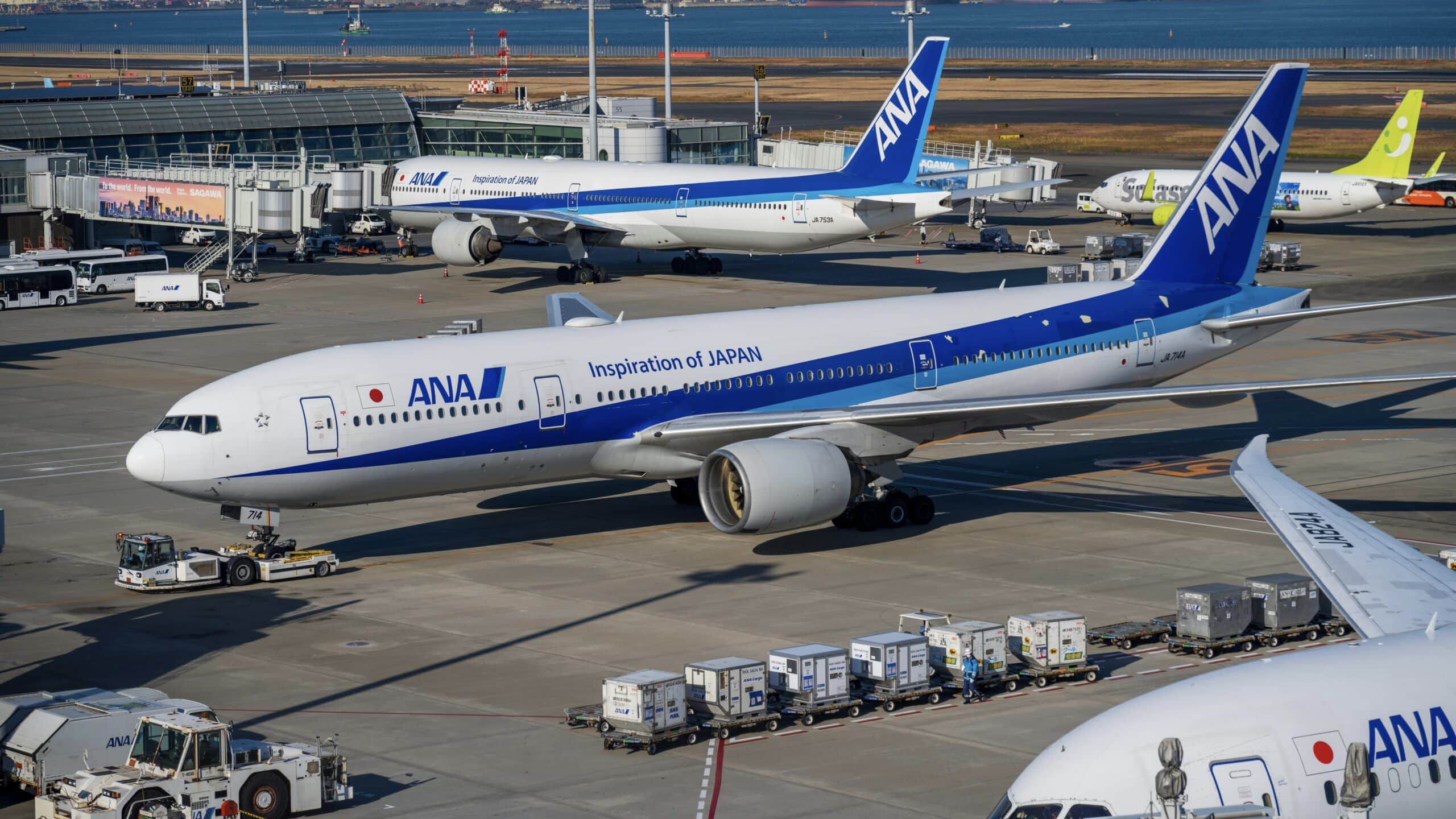
Choosing between the Airbus A350 vs Boeing 787 comes down to what you value most during your journey.
Here is a clear breakdown to help guide your decision:
- Best For Economy Class Travelers: Airbus A350
- The A350 offers wider seats (about 18 inches) in most layouts compared to the 17 inches on the 787. This extra space can make a big difference on long-haul flights. The cabin is also slightly quieter, creating a calmer experience.
- Best For Business Class Privacy: Airbus A350
- Thanks to its wider cabin, the A350 often features 1-2-1 seat layouts, giving every passenger direct aisle access. This makes it a strong choice for travelers who value privacy and space.
- Best For Ultra-Long-Haul Flights: Airbus A350
- With a range of up to 9,700 nautical miles, the A350 was designed for the longest nonstop routes in the world. It is the aircraft of choice for airlines like Singapore Airlines on flights lasting 15 hours or more.
- Best for Route Flexibility: Boeing 787
- The smaller size and efficiency of the 787 make it ideal for serving secondary city pairs. This means more nonstop options from airports that might not otherwise support a large wide-body aircraft.
- Best for Environmental Impact: Tie
- Both the A350 and 787 burn about 20 – 25 percent less fuel than older wide-body jets, making them two of the most eco-friendly planes in the sky. Choosing either supports airlines that are reducing emissions.
TPA Pro Tip: While it is helpful to know the differences between the Airbus A350 and Boeing 787, passengers rarely have the ability to choose the aircraft directly. The plane you fly depends heavily on the airline fleet. For example, United Airlines only operates the Boeing 787, while Singapore Airlines heavily features the Airbus A350. When booking, you can check the aircraft type on the airline website, but your options will always be tied to the routes and fleets of specific carriers.
Final Thoughts
Both the Airbus A350 and the Boeing 787 Dreamliner represent the future of long-haul travel. They are quieter, more fuel efficient, and more comfortable than the aircraft they replaced. For travelers, this means that flying across the world has never been easier or more enjoyable.
The Airbus A350 usually stands out for its wider seats, quieter cabin, and ultra-long-haul capabilities, making it the top choice if space and comfort are your priorities.
The Boeing 787, on the other hand, delivers a unique passenger experience with its giant windows, innovative lighting, and route flexibility, often giving travelers more nonstop options.
At the same time, it is important to remember that the airline itself plays a bigger role in shaping your journey than the aircraft alone. Seat layout, service quality, and onboard amenities can vary widely, even on the same model of aircraft.
The next time you book a long-haul flight, take a moment to check the aircraft type in your booking details. While you may not always have a choice, knowing whether you will be on an A350 or 787 can help you set expectations for comfort and plan ahead to choose the best seat available.
In the end, whether you fly on the A350 or the 787, you can expect a significantly better travel experience than older planes. Both aircraft make long-distance travel more efficient, more comfortable, and more accessible than ever before – bringing the world just a little closer with every flight.